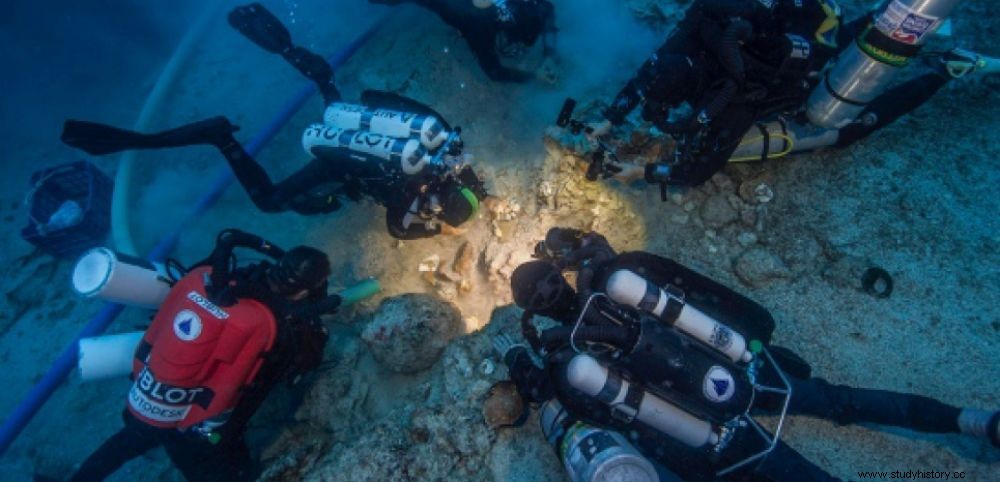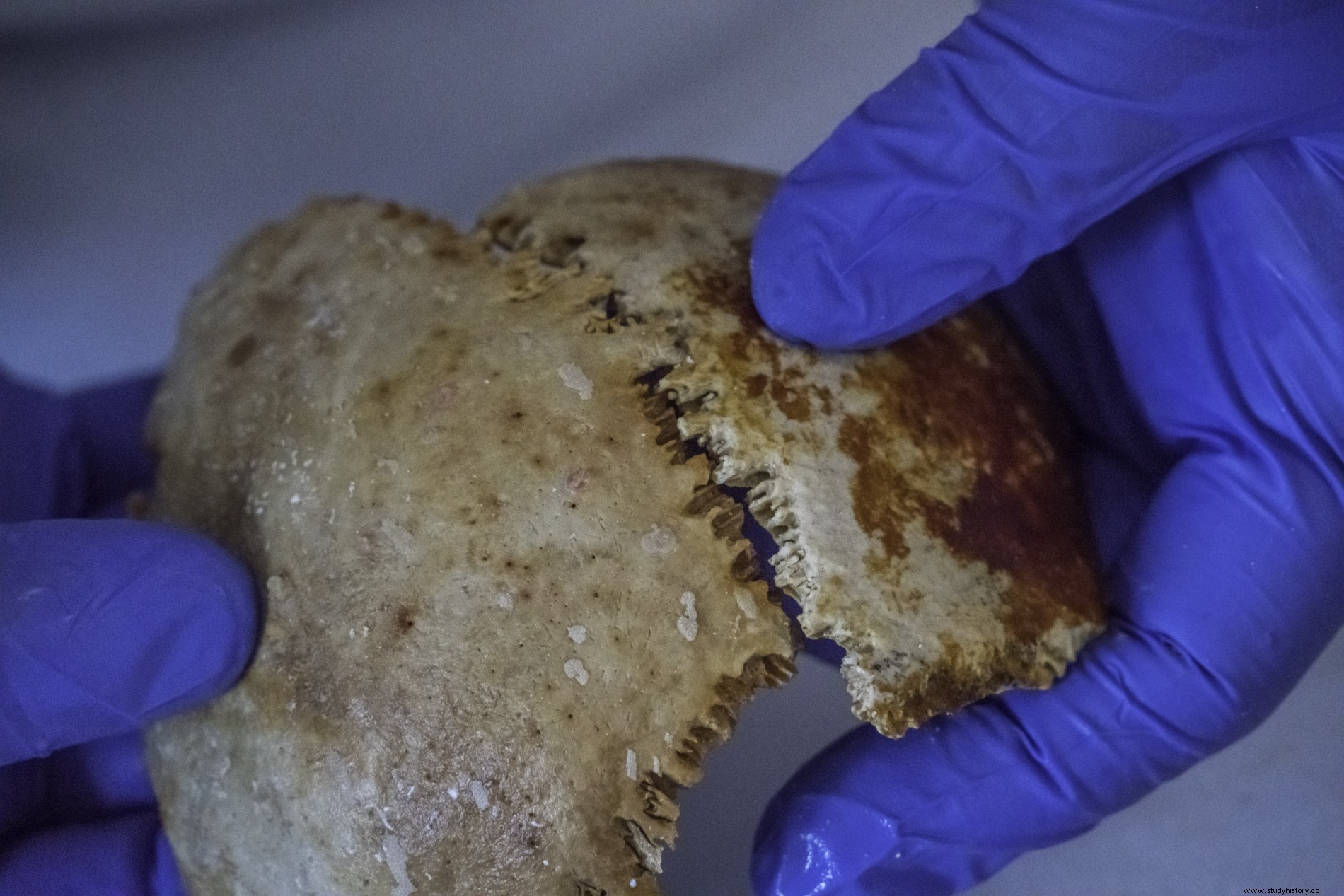An international research team has just discovered 2,000-year-old human remains at the site of the Antikythera wreck, off the Greek island of the same name.

Divers examine human remains discovered at the site of Antikythera, in the Aegean Sea (Greece).
SHIPWRECK. 2000 years under the sea! The remains of a human skeleton two thousand years old have just been discovered on the site of the famous Antikythera wreck, in the Aegean Sea, off the Greek island of the same name. This is where a Roman ship of the I st century before our era had been unearthed in 1901, already revealing the exceptional bronze "mechanism" – the most complex ever unearthed – whose use has already been the subject of multiple interpretations.
DNA research would undoubtedly provide a wealth of information on these remains
From now on, it is therefore an ancient remains that has just been found as announced by the magazine Nature retracing the second phase of the 2016 Woods Hole Oceanographic underwater expedition Institution (WHOI) (United States), associated with the teams of Ephorate of Underwater Antiquities . The researchers who worked with the approval of the Greek authorities. In total, three human teeth, part of the skull, several ribs and two femurs were brought to the surface. Admittedly, this is not the first time that a team has found bones on this wreck.
 Skull bone fragment discovered at the Antikythera shipwreck site. © Brett Seymour USA/WHOI/ARGO
Skull bone fragment discovered at the Antikythera shipwreck site. © Brett Seymour USA/WHOI/ARGO
Already in 1976, Jacques-Yves Cousteau and the Calypso divers had recovered some of them. But analytical techniques have evolved. Indeed, if granted by the Greek Ministry of Culture, DNA research would undoubtedly yield a wealth of information about these remains, according to Hannes Schroeder, a specialist in ancient DNA analysis at the museum. of natural history in Copenhagen (Denmark). During a first mission carried out between May 22 and June 11, 2016, the WHOI expedition also found a bronze spear, fragments of marble and bronze statues, vases, amphorae and a gold ring as well than elements of the merchant ship itself.
